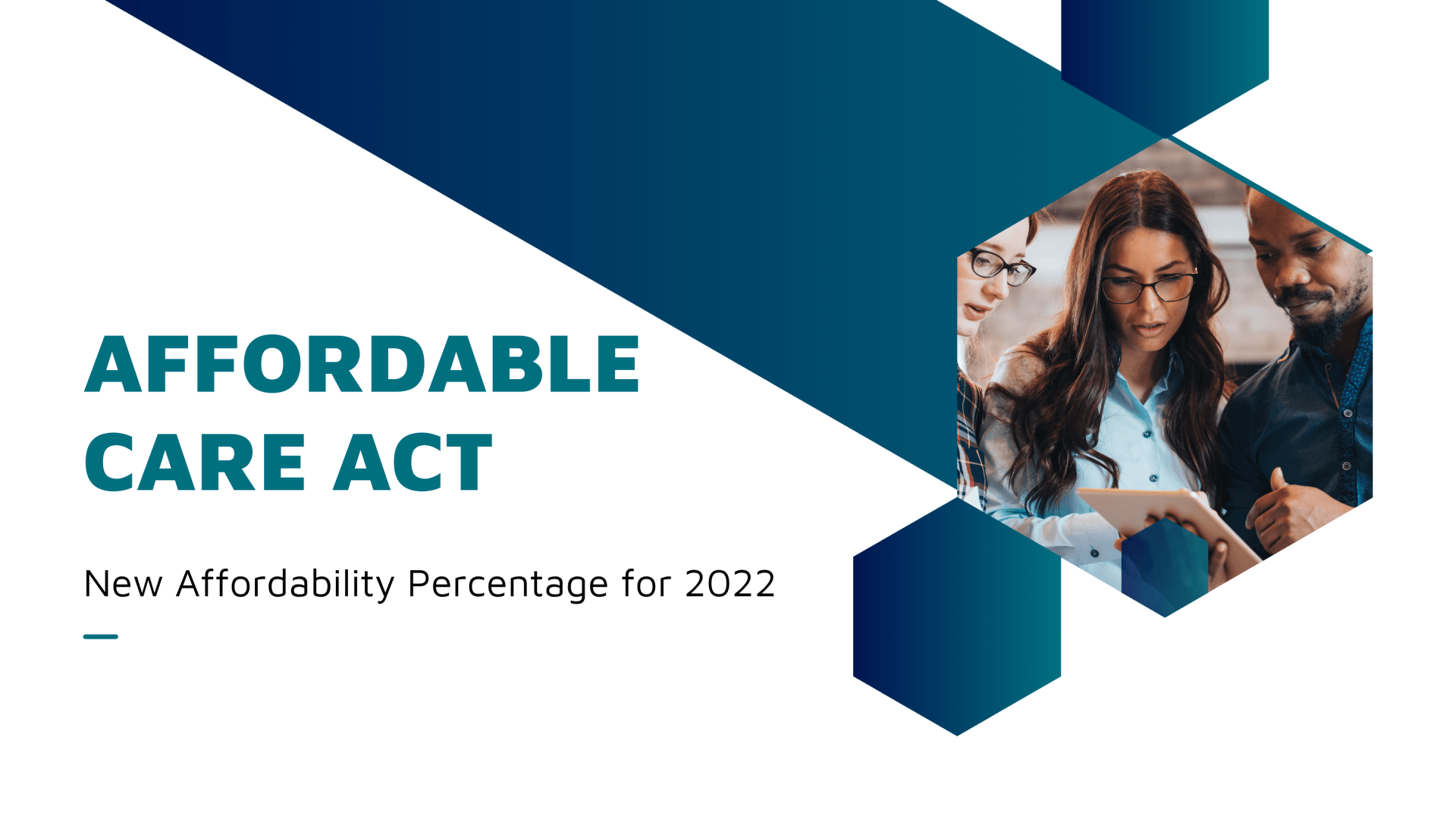Simco Blog

01 Apr, 2024
A new report released by family health benefits platform Ovia Health by Labcorp (Ovia) uncovered U.S. workers’ preferences for family-friendly workplace benefits. American employees are looking for company benefits and policies that support their families, and nearly three-quarters (73%) would leave their current jobs to find them. Respondents also expressed widespread dissatisfaction with available family-friendly benefits. Many (62%) employees don’t consider their employer family-friendly, and almost half (43%) graded their benefits a “C” or lower. Overwhelmingly, working parents seek longer and more pay during parental leave, stronger flexibility policies and child care support. Furthermore, parental leave is generally associated with the birth of a baby, but respondents expressed a need to expand that thinking regarding benefits. In fact, 10%-20% of pregnancies end in miscarriage, validating the employee demand for better maternity management support (to identify risk and intervene) and pregnancy loss support. Along with fertility benefits, there is a growing demand for family-building offerings, including adoption, foster and surrogacy support. One-third (38%) of respondents said family-building benefits are important, but only 5%-14% of employees can access them. Today’s workers want and need unbiased support and alternative family planning support, including adoption and surrogacy. “Pregnancy among people in their 30s and 40s is on the rise, and thankfully, same-sex couples are able to speak more openly about their intentions to build their families. There's more of a need for alternative family-planning support.” - Dr. Jenny Carrillo, president of Ovia Employer Takeaway The Ovia report stated that if an organization values retention, productivity and engagement, it should prioritize fostering a family-friendly culture in 2024 and beyond. To round out a great family benefits package and contribute to holistic wellness, employers can also incorporate nutrition, health screenings and menopause support. An organization can promote a family-friendly culture by making its commitment to its workforce’s health obvious. More workers today are looking for a company culture that inclusively supports their families, assists with various paths to parenthood and helps them navigate life’s journeys. Employers should continue to monitor workers’ desires and adjust their health benefits strategy as needed. Contact Simco today for more information.

19 Mar, 2024
Despite employers’ best efforts to offer competitive health care benefits to workers, many employees struggle with medical debt. According to a new survey commissioned by Goodroot, a community of health care companies, more than 4 in 10 employees report having experienced medical debt. “When employees are struggling with a massive, unpayable medical bill, it not only puts tremendous stress on their family but also harms their ability to be productive and contribute to company culture.” - Goodroot CEO Mike Waterbury Medical Debt in the United States In 2023, employers spent an average of $17,393 for family coverage per employee, a 48% increase since 2013. Although employers increasingly invest in their sponsored health care benefits, employees still face medical debt. Consider these key findings from the Goodroot survey: Medical debt remains the leading cause of bankruptcy in the country. Half (52%) of Americans in medical debt owe more than $2,500. Medical debt impacts employees’ ability to cover daily living expenses. At some point, nearly 4 in 10 people have been unable to afford rent, groceries or utilities due to medical bills. People are delaying health care in anticipation of high costs. The majority of Americans (86%) who have experienced medical debt delayed care due to the expected cost. Younger workers are more likely than older ones to experience medical debt, and their debts are larger. Of employees aged 42 or under with medical debt, 59% owe more than $2,500, compared to 45% of workers aged 43 or older. Goodroot stressed that employees often are unaware that financial help is available. Hospitals are federally mandated to offer “community benefits, including free or discounted urgent and medically necessary care to patients unable to pay.” However, each health system has its own financial assistance policy, eligibility criteria and application form, which can be confusing for patients. Employer Takeaway Medical debt is taking a toll on many Americans. Employers can help their workers by integrating hospital financial assistance into health benefits. In addition to health care benefits, some employers are also exploring providing a health-cost navigator who will work directly with employees to help them understand and use their benefits effectively by comparing pricing, reviewing bills and negotiating costs. Employers should continue to monitor health care and benefits trends. Contact us for more resources.

27 Feb, 2024
Employee benefits are the cornerstone of a thriving organization. Perks and benefits are pivotal in enhancing job satisfaction, attraction and retention rates, employee well-being and overall workplace morale. While some organizations may feel constrained by budget limitations, there are numerous low- and no-cost benefits that can significantly impact employee happiness and productivity. This article highlights 15 budget-friendly employee benefits. Affordable Benefits That Employees Want Many of today’s most popular benefits come at little to no cost for employers. As the race for talent remains tight, employers may consider offering the following affordable employee benefits to appeal to workers: 1. Flexible work arrangements —Many of today’s workers desire flexible work hours or the option to work remotely. This flexibility can greatly improve work-life balance and reduce stress levels. Remember that flexible work arrangements require clear policies and communication to ensure accountability and consistency among workers. 2. Flexible vacation policies —Instead of rigid vacation accrual systems, more employers are implementing unlimited or flexible vacation policies. Trusting employees to manage their time off can lead to greater autonomy and responsibility and help reduce burnout. However, flexible policies require trust and accountability from employees and may entail additional coordination to manage leave schedules. 3. Wellness programs —Popular wellness initiatives include yoga classes, meditation sessions or health challenges. Promoting physical and mental well-being can lead to healthier, happier employees. Wellness programs are trending as a way to foster positive company culture, but it’s important to keep in mind that they often require commitment and resources for planning and implementation. 4. Family-friendly policies —The path to and journey of parenthood are unique. Employers can offer attractive family-friendly policies, such as parental leave, flexible child care arrangements, generous nursing breaks or assistance with adoption expenses. Supporting employees in their family responsibilities can improve loyalty and morale. 5. Professional development opportunities —Today’s workers value learning and development programs for their career growth. Investing in employee professional growth opportunities, such as online courses, workshops or conferences, demonstrates a commitment to their long-term success. 6. Employee recognition programs —Emotional salary, which comprises non-monetary components contributing to an employee feeling adequately rewarded at work, contributes to higher levels of job satisfaction. Frequent recognition is one such factor of emotional salary that can help keep workers happy. When employees feel valued, recognized and appreciated for their contributions, they are more likely to enjoy their work and find it fulfilling. Therefore, employers can establish a system for publicly acknowledging and rewarding outstanding performance. Recognition doesn’t always have to come with a monetary reward; a simple “thank you” can go a long way. 7. Employee assistance programs (EAPs) —These programs can help employees save on health care expenses, provide tax benefits and promote financial wellness. While such programs require administrative setup, the payoff can be worth it, as EAPs provide confidential support for employees dealing with personal or work-related issues. 8. Flexible spending accounts (FSAs) or health savings accounts (HSAs) —Even if an organization can’t afford to provide comprehensive health care benefits, offering FSAs or HSAs allows employees to set aside pre-tax dollars for medical expenses, which may reduce their financial burden. 9. Financial education workshops —More workers want guidance to increase their financial literacy. To meet this desire, employers can provide resources or workshops on personal finance management, budgeting and retirement planning. Empowering employees with financial literacy can alleviate stress and improve overall well-being. 10. Mentorship programs —Mentorship can facilitate knowledge transfer, boost career development and employee engagement, and strengthen the company’s talent pipeline. By offering mentoring resources or pairing junior employees with experienced mentors within the organization, a company can foster professional growth, skill development and a sense of belonging. A mentorship program can easily be scaled based on employees, roles and organization. 11. Paid volunteer time —Employers can encourage community engagement by granting paid time off for employees to volunteer with charitable organizations. Giving back to the community fosters a sense of purpose and fulfillment and may even enhance team bonding. 12. Casual dress code —Relaxing the dress code policy can make employees feel more comfortable and increase morale. This option could entail casual Fridays or more lax requirements during summer. The dress code policy should be clearly defined to avoid confusion. 13. Summer hours —To help boost employee morale and satisfaction during the summer months, employers can offer summer hours, such as closing an hour or two early on Fridays. This perk demonstrates flexibility and trust from the employer and can ultimately help improve employees’ work-life balance during vacation season. 14. Employee discount programs —Employers can offer discounts that appeal to workers’ interests and needs. This perk allows employees to save money on their everyday purchases, which can improve their financial literacy and boost company loyalty. Keep in mind that exclusive discounts hinge on partnerships and negotiation, and they may not be equally beneficial to all employees, depending on their interests and preferences. 15. Health and wellness resources —It may be beneficial to provide access to resources such as mental health hotlines, virtual counseling sessions, or fitness and meditation apps. Prioritizing employee well-being sends a clear message that their health is valued. Summary Offering employee benefits doesn’t have to come with a hefty price tag. These low- or no-cost benefits that workers value can enable employers to create a supportive and fulfilling work environment that, in turn, attracts and retains top talent. Investing in employee satisfaction not only boosts morale and productivity but also strengthens the overall success and reputation of the organization. Contact Simco for more information.

31 Jan, 2024
Attracting and retaining employees has challenged employers since the onset of the COVID-19 pandemic. In 2024, the labor market is expected to cool slightly; however, competition for talent will remain. As such, employers must remain agile and adapt to developing labor and market trends that will shape the market in 2024. In particular, current labor challenges are forcing employers to find ways to balance rising health care costs and inflation while providing employees with benefits they value and need. Understanding this year’s key employee benefits trends can help employers attract and retain talented individuals in an evolving labor market. This article discusses seven key employee benefits trends in 2024. 1. Managing Health Care Costs High inflation, provider shortages, an increase in serious chronic conditions and deferred care due to the pandemic continue to drive health care costs. According to several industry surveys and reports, employers anticipate health care costs to grow between 6% and 8.5% in 2024, the largest increase in more than a decade. This year, employers may struggle to mitigate skyrocketing health care costs while keeping benefits affordable for employees. Thus, many employers will plan and implement multiple cost-saving strategies in 2024 to mitigate rising health care costs, such as: Modifying health plan designs Incorporating health care analytics Using artificial intelligence to streamline administrative workflows, help employees make informed benefits decisions and decrease costs Implementing pharmacy management strategies Maintaining full coverage of recommended prevention and screening services Tailoring benefits to meet employees’ specific needs Expanding voluntary benefits offerings Improving employee health care literacy Investing in more virtual health opportunities Incentivizing employees to seek cost-effective care options Revisiting cost-sharing arrangements 2. Increasing Personalization and Flexibility The modern workforce is comprised of four or five generations of workers from various backgrounds. In 2023, many employers struggled to find a benefits plan that satisfied their entire workforce. According to the Life Insurance Marketing and Research Association’s 2023 Workforce Benefits Study, nearly a third of all employers said that meeting the needs of their multigenerational workforce was a primary challenge. In 2024, employers will increasingly offer personalized and flexible benefits to address the unique needs and expectations of individual employees. The following are popular options for benefits customization: Flexible spending accounts Flexible work arrangements Customized retirement plans Convertible paid time off Domestic partner benefits Broader medical coverage Expanded leave Diverse wellness programs Personalized learning and development opportunities 3. Prioritizing Employee Mental Health Employee mental health is a priority for many employers in 2024. Countless employees are experiencing a combination of mental health concerns, including stress, lack of motivation and reduced focus. High inflation and widespread financial stress are exacerbating these issues, impacting workplace productivity, retention and morale. Given the impact employees’ mental health can have on an organization, employers are considering employees’ mental health while making important business decisions in 2024. To this end, savvy employers will continue prioritizing employee mental health in 2024 with the following methods: Finding specialized mental health treatment from chosen vendors Providing meditation and mindfulness resources Expanding employee assistance programs to address burnout and other mental health challenges Offering virtual therapy sessions Providing managers with training to recognize employee behavioral issues Expanding mental health service offerings Investing in programs that build resiliency and improve coping strategies Conducting anti-stigma behavioral campaigns 4. Focusing on Belonging While more employers invested in diversity, equity and inclusion (DEI) initiatives in 2023, many employees—especially those from underrepresented and marginalized groups—continue to feel excluded. These emotions can undermine work performance, inhibiting creativity, participation and willingness to collaborate. They can also increase the risk of burnout and stress, leading to increased turnover and higher rates of absenteeism. In 2024, employers are expected to address belonging to bridge the gap between existing DEI initiatives and the impact felt by employees. With that in mind, many employers are more often focusing on the factors that impact workplace belonging, such as organizational culture, leadership behaviors and personal relationships among employees. Others are introducing initiatives to foster belonging, such as: Encouraging supervisors to check in with employees Promoting social bonds within the organization Encouraging open-door policies Creating time for employees to connect socially Facilitating trusting relationships (e.g., mentorships) Celebrating employee achievements Involving employees in critical business decisions Creating fair and transparent compensation and promotion practices 5. Expanding Family-building and Reproductive Health Benefits Reproductive health care benefits became a key issue for employers in 2023 after the U.S. Supreme Court’s Dobbs v. Jackson Women’s Health Organization decision ended federal protections for abortion rights and permitted states to implement their own regulations. Numerous employers will continue to expand reproductive health benefits in 2024 to meet employee needs and remain competitive. Additionally, more employers are offering family-building benefits, as they have proven to be highly valued among employees who are looking to start or build their families. The impact of these benefits also often extends beyond affected individuals to make employees feel welcomed and supported in the workplace, improving engagement, productivity and retention. In the next year, many employers are expanding benefits offerings to include the following: Paid parental and adoption leave Child care subsidies Flexible scheduling and remote and hybrid work options Surrogacy benefits Family planning assistance High-risk pregnancy care Pregnancy, lactation, postpartum and menopause support Testosterone deficiency treatments Employers providing legal reproductive care benefits should assess the implications of these offerings as reproductive health care laws continue to evolve. 6. Balancing Flexibility With Return-to-Office Mandates Many employers responded to 2023’s tight labor market by offering remote and flexible work opportunities. As some employers begin issuing return-to-office mandates in 2024, organizations that are rigid in their policies may risk losing talented individuals and DEI efforts. They may also struggle to attract new employees from a smaller talent pool. As such, in 2024, proactive employers will focus on balancing employee expectations and needs with the benefits of having employees in the office. For instance, they may offer hybrid work options as a compromise for employees who are happier and more productive with flexible work arrangements. Additionally, employers are increasingly focusing on creating safe, empathetic and transparent workplace environments to promote employee well-being as they return to the office. Some employers are also offering incentives for in-person employees, such as: Commuter benefits Child care benefits Catered meals 7. Prioritizing Preventive Care Services In 2023, record-high inflation and skyrocketing medical care costs prevented numerous employees from seeking necessary preventive care for fear of incurring medical debt. However, avoiding medical care can worsen long-term health outcomes and increase costs for both employers and employees by preventing the early detection of serious illnesses. As employers struggle to mitigate rising health care costs in 2024, many will focus on keeping employees healthy and providing benefits education to help guide them on their journeys to be educated health care consumers, maximize their benefits and understand the importance of routine care. Summary Although every workplace is different, employers who understand current benefits trends will be better equipped to provide employees with the benefits they desire and need. In an evolving labor market, an attractive benefits plan is critical to maintaining a healthy, happy and productive workforce, which can ultimately impact organizational productivity, engagement and revenue. Contact us today for more benefits resources.

17 Jan, 2024
As the workplace landscape continues to evolve, so does the understanding of employee wellness. In 2024, organizations are embracing innovative strategies to prioritize their workforce's physical, mental and financial health. While organizations may have already expanded their mental health support in past years, some are now pivoting and embracing a holistic approach to employee well-being. This article highlights five employee wellness trends to look out for in 2024. 1. Supporting Employee Burnout Employers shouldn’t expect employee burnout to disappear anytime soon. A 2024 trends report from wellness portal provider MediKeeper notes that toxic workplaces, long hours, understaffing, lack of recognition, interpersonal conflict and unclear or inexplicable workplace policies are contributing to employee burnout. As such, organizations may prioritize strategies to prevent and alleviate burnout. Flexible work arrangements, realistic workload expectations and designated downtime are being implemented to help employees maintain a healthy work-life balance. Moreover, companies could encourage open communication channels that allow employees to voice their concerns and seek support as needed. On a related note, many employers will renew their focus on mental health in 2024 as they acknowledge the impact of mental health on employees’ overall well-being. Employee assistance programs (EAPs), counseling services and stress management workshops are increasingly becoming key components of workplace wellness initiatives. More employers are also investing resources to destigmatize the topic of mental health (e.g., anti-stigma campaigns, mental health literacy training and EAPs) and foster a culture where employees feel comfortable seeking mental health support. 2. Integrating Technology Technological advancements will shape a new employee wellness landscape that incorporates digital health platforms, wearable technology and artificial intelligence (AI) solutions. More employers will explore these types of technology to understand how to integrate them into wellness or employee-focused programs. Technology can enable real-time health monitoring, personalized wellness plans and immediate 24/7 access to health resources and services. Virtual health platforms can help overcome barriers to health care access. In 2024, apps are expected to go beyond fitness tracking and feature mindfulness exercises, nutritional guidance and personalized wellness plans. Despite their limitations, AI-driven approaches have the potential to promote preventive health care and detect or manage health issues. Personalized data allows employees to understand their health better and make informed decisions about their health or lifestyle. Employers are leveraging technology to tailor and improve their employees’ well-being experiences. 3. Expanding Financial Wellness Programs Money is a top stressor for employees and concerns have been exacerbated by prolonged inflation pressures throughout 2023. Financial stress can significantly impact an individual's mental and emotional health. In 2024, employers are expected to extend their wellness programs to include financial education and support to help contribute to a more secure and stable workforce. Employers can consider the following common personal financial goals as they design their financial support efforts: Building an emergency savings Navigating cashflow changes Managing debt Choosing proper health insurance and benefits Preparing for significant life events Saving for retirement Many organizations employ a multigenerational workforce, which means employees often face unique financial stressors. To provide relief, some employers offer financial wellness programs that vary in complexity but can include virtual personal financial planning meetings, tuition reimbursement and seminars. EAPs can also help employees navigate financial challenges. The idea is to provide a wide variety of services for the workforce. Employers can help reduce employee financial stress by exploring financial wellness resources and support options and offering attractive programs for current and prospective employees. Financial wellness is a critical component of well-being and can be a competitive offering. 4. Taking a Holistic Approach to Wellness The days of compartmentalizing physical, mental and emotional well-being are over. In 2024, organizations are adopting a holistic approach that considers the entire employee. For example, holistic wellness programs encompass nutrition, fitness, mental health and stress management. An integrated approach aims to create a work environment that nurtures every aspect of an employee's well-being, fostering a sense of balance and resilience. This renewed focus on holistic wellness is not just a trend; it's a fundamental shift in how companies approach employee care. Organizations can create a supportive culture that encourages education, open conversations and utilization of available resources by prioritizing mental and financial well-being in health and wellness initiatives. 5. Cultivating a Company Culture of Care Perhaps the most transformative trend is the conscious effort to cultivate a culture of care within organizations. This goes beyond workplace policies and programs; it's about fostering an environment where employees feel seen, heard, valued and supported. Team-building activities, mentorship programs and leadership training focused on empathy and emotional intelligence are becoming integral components of organizational efforts. Additionally, psychological safety is a growing priority for employers. Being psychologically safe means employees feel secure in talking and being vulnerable in front of others. Organizations benefit when employees feel comfortable asking for help, sharing ideas or challenging the status quo without fear of negative consequences. Leaders play an essential role in nurturing psychological safety in the workplace, so it starts at the top. Employers can foster a psychologically safe work environment by reflecting on leadership styles, accommodating dispersed employees and demonstrating concern for employees. Employee wellness initiatives play perfectly into this. Employers can proactively train employees and managers on psychological safety to raise awareness and teach supportive behaviors and practices that foster trust and transparency around health and wellness topics (e.g., burnout and stress). Remember that psychological safety is a key work dynamic that takes time to build but just moments to destroy. It comes down to employers creating opportunities for open feedback and dialogue so employees can be themselves in the work environment. Summary Employee wellness is taking center stage in 2024, with organizations recognizing the interconnected nature of physical, mental and financial health. More employers are paving the way for a holistic approach to workplace wellbeing. As these trends evolve, employees can expect a more supportive and nurturing work environment that values their overall health and happiness. Organizations can start by evaluating current wellness initiatives and thinking about ways to improve them. To ensure offerings and investments resonate with the workforce, it can be helpful to survey employees first and see what they find most valuable and necessary for their overall well-being. Contact us for more wellness-related workplace guidance.

27 Nov, 2023
In fast-paced and demanding work environments, the importance of mental health cannot be overstated. Employees who are mentally well are more productive, engaged and satisfied with their jobs. Mental health treatment, including therapy, medication and self-care, can help people who are experiencing mental illness. However, taking that first step toward recovery or seeking help can be challenging. The National Alliance on Mental Illness (NAMI) reports that the average delay between the onset of mental health symptoms and treatment is 11 years. A myriad of factors, such as cost, access and stigma, can hold workers back from receiving the mental health support and treatment they need. Employers can help employees overcome these barriers, understand available treatment options and start their recovery journey. This article explores barriers to mental health care and ways employers can help break them down to support employees holistically. The Importance of Mental Health Benefits Before delving into the strategies, it’s crucial to understand why mental health benefits are so essential in the workplace: Improved employee well-being —Mental health benefits help employees manage stress, anxiety and other mental health issues, which can lead to improved overall well-being and happiness. Increased productivity —Employees with access to mental health support are more likely to be productive, as they can better manage work-related stress and challenges. Reduced absenteeism —Mental health benefits can help reduce absenteeism caused by mental health issues, leading to employer cost savings. In fact, the U.S. Centers for Disease Control and Prevention reports that depression alone causes an estimated 200 million lost workdays each year, costing employers $17 billion to $44 billion. Enhanced employee engagement —Employees who feel supported in their mental health are more engaged and committed to their jobs and the company. Talent attraction and retention —Offering robust mental health benefits can make an organization more attractive to potential employees and help retain current talent. While more employers may focus on their businesses’ bottom line, mental health support is not to be overlooked as it can have ripple effects. A 2023 study by mindfulness app Calm found that for every $1 invested in employees’ mental health, employers can save $2-$4 on other expenses, such as health care costs—that’s a win-win in today’s economic climate. Employee mental health is more important than ever before, and employers are in a position to offer resources and support their employees. Removing Benefits Barriers More employers recognize the significance of promoting mental well-being in the workplace and offer a range of mental health benefits to support their employees. However, barriers can still prevent employees from accessing these essential benefits. To address the numerous barriers to mental health care, employers can consider the following strategies for increasing access to proper care and normalizing mental health support: Review benefits offerings. One way to address employee mental health is by ensuring mental health is incorporated into health care offerings. These are some popular benefits or policies: Inclusive health insurance plans with mental health coverage Employee assistance programs Flexible work arrangements Paid caregiving leave Mental health days Educate about available benefits. In addition to educating employees about available mental health benefits and resources, employers can explain how to leverage other benefits to make mental health treatment and services more attainable or offset out-of-pocket expenses. For example, funds from health savings and flexible spending accounts can generally be used to pay for mental health therapy. Reduce the stigma. Employers can build trust with employees by showing them they won’t be fired or punished for mental health issues. They can do this by openly discussing mental health in the workplace, encouraging self-care and allowing flexible scheduling for employees to get mental health treatment. Additionally, employers can educate employees on improving their mental health with in-office training on self-care, stress management and mental health issues. Promote work-life balance. Employees who feel they have a good balance between their jobs and personal lives are likelier to be healthy, happy and productive workers. Organizations can foster a healthy work-life balance among workers by providing them the time and flexibility they need for a flourishing personal life, requiring them to take minimum vacation time, and encouraging them to unplug from their jobs when not in the office or outside of working hours. Additionally, flexible work schedules can allow employees sufficient time to seek and obtain mental health services. Support caregiver responsibilities. The COVID-19 pandemic put caregiving in the spotlight, illuminating the mental health challenges that they can face. While caregivers often focus on others, they should also care for their mental health. Support employee wellness. Exercise, healthy eating and good sleep habits are crucial for mental health and resilience. Employers can boost employees’ mental health by encouraging healthy behaviors through wellness programs and offering employee incentives, such as healthy lunches and free gym memberships. Employers should also consider offering employee assistance benefits (e.g., free counseling or therapy) to help employees struggling with mental health or other problems. Summary Mental health challenges are prevalent in the workplace. Fortunately, employers can be impactful by supporting and facilitating mentally healthy workplaces. They can boost employee mental health and overall wellness by creating open and trusting work environments and providing employees with mental health resources and support. Contact us for more employee benefits resources.

26 Nov, 2023
Each year, the Kaiser Family Foundation conducts a survey to examine employer-sponsored health benefits trends. This article summarizes the main points of the 2023 Employer Health Benefits Survey . Health Insurance Premiums In 2023, the average premiums for employer-sponsored health insurance were $8,435 for single coverage and $23,968 for family coverage. The average single and family premiums increased by 7% over the last year, which was faster than the previous year (2% and 1%, respectively). Premiums for 2023 were expected to increase more in recent years since many 2022 premiums were locked in months before inflation became a significant concern. Additionally, the Kaiser report notes an increase of 5.2% in workers’ wages and inflation of 5.8%. The average premium for family coverage has risen 22% over the last five years, compared with a 27% increase in workers’ wages and 21% inflation. Premiums under high deductible health plans with savings options (HDHP/SOs) were still lower than the average premium. HDHP/SOs’ annual premiums for single and family coverages were $7,753 and $22,344, respectively. Conversely, on average, the premiums for workers enrolled in preferred provider organization (PPO) plans were higher than others. The average PPO premium was $8,906 for single coverage and $25,228 for family coverage in 2023. Worker Contributions The average worker contribution toward the premium was 17% for single coverage and 29% for family coverage in 2023, similar to 2022 percentages. In terms of dollar amounts, workers contributed $1,401 and $6,575 toward their premiums for single coverage and family coverage in 2023, respectively. Once again, these numbers were similar to 2022 figures but greater than five years ago. Plan Enrollment Enrollment figures were reasonably similar to last year’s. The following were the most common plan types in 2023: PPOs: 47% of workers covered HDHP/SOs: 29% of workers covered Health maintenance organizations (HMOs): 13% of workers covered Point-of-service (POS) plans: 10% of workers covered Conventional (indemnity) plans: 1% of workers covered Self-funding In the past few years, self-funded plans have become more popular. Many large organizations self-fund or pay for some or all health services for their workers directly from their own funds rather than purchase health insurance. In 2023, 65% of covered workers—including 18% at small firms and 83% in large firms—are enrolled in self-funded plans. The percentage of covered workers in self-funded plans in 2023 was similar to 2022. Employee Cost Sharing Most workers must pay a share of their health care costs, and the average deductible for single coverage was $1,735 in 2023, similar to last year’s number. The average annual deductible has increased 10% over the past five years and 53% over the past decade. The percentage of covered workers with a general deductible of $2,000 or greater for single coverage has increased by 5% over the last five years. Beyond deductibles, most workers cover some portion of the costs of their health care services. For example, 63% of covered workers had coinsurance, and 10% had a copay for hospital admissions. The average hospital admission coinsurance rate was 20% in 2023; the average payment amount is $404. In addition, nearly all workers are covered by a plan with an out-of-pocket maximum (OOPM), but the costs vary considerably. Among covered workers with single coverage, 13% had an OOPM of less than $2,000, and 21% had an OOPM of $6,001 or more. Availability of Employer-sponsored Coverage While nearly all large firms (those with 200 or more workers) offer health benefits to at least some workers, small firms (three to 199 workers) are significantly less likely to do so. In 2023, 53% of all firms offered some health benefits, which was similar to last year’s percentage (51%). Although the vast majority of workers are employed by firms offering health benefits, many aren’t covered by their employers. Some are not eligible to enroll, while others choose not for various reasons. Overall, 79% of workers are eligible for health benefits at firms that offer coverage, and 75% of eligible workers take up the organization’s offer. That works out to be 59% of workers at firms that offer health benefits enrolling in coverage. Among firms that offer health benefits and firms that do not, 53% of all workers were covered by health plans offered by their employer. This is similar to last year’s percentage. Health Promotion and Wellness Programs Many firms have programs that help workers identify health issues and manage chronic conditions. The 2023 Kaiser report highlights the following programs: Health risk assessments —Among organizations offering health benefits, 36% of small firms and 54% of large firms provided workers the opportunity to complete a health risk assessment, similar to last year. Among large firms that offer a health risk assessment, 59% used incentives or penalties to encourage workers to complete the assessment, higher than the percentage (50%) in 2022. Biometric screenings —Similar to last year’s trend, in 2023, workers at 15% of small firms and 42% of large firms were given the opportunity to complete a biometric screening. Among large firms with a biometric screening program, 67% use incentives or penalties to encourage workers to complete the assessment. Although this is a larger share than last year (57%), it is not significantly different. Health and wellness promotion programs —Organizations offer such programs to help employees improve their lifestyles and avoid unhealthy habits. Most employers—62% of small and 80% of large—offered a program in at least one of these areas: smoking cessation, weight management, and behavioral or lifestyle coaching. These figures are similar to those of last year. Disease management programs —Among organizations that offer health benefits, 36% of small firms and 64% of large firms offer disease management programs to improve employee health and reduce enrollees’ costs for certain chronic illnesses. These programs aim to educate workers about their disease and suggest treatment options. Telemedicine Large firms are more likely than small firms to cover telemedicine services. In 2023, 91% of large employers with 50 or more workers covered health care services through telemedicine in their largest health plan, similar to last year. While small firms are more likely than large firms to provide telemedicine services only through their health plan, large firms are more likely to provide telemedicine services through a specialized telemedicine provider. Since the COVID-19 pandemic officially ended, medical services are now generally available in person, and many employees have partially or fully returned to their workplaces. The Kaiser report highlighted how employers with 50 or more enrollees felt about the importance of telemedicine going forward. Overall, 28% of organizations believe telemedicine will be “very important” in providing access to enrollees in the future; another 32% say it’ll be “important.” While 41% of organizations say telemedicine will be “very important” in providing access to behavioral health services in the future, an additional 30% say it will be “important.” Fewer organizations feel that primary and specialty care—27% and 16%, respectively—will be “very important” in providing health care access. Abortion Services The U.S. Supreme Court decision in Dobbs v. Jackson, overturning Roe v. Wade, and subsequent state activity to regulate abortion has increased interest in coverage for abortion services in employer plans. In the 2023 survey, 32% of large firms (those with 200 or more workers) offering health benefits said that legally provided abortions are covered in most or all circumstances, and 18% said legally provided abortions are only covered under limited circumstances (e.g., rape, incest, or health or life endangerment of the pregnant enrollee). The majority of employers (40%) answered “Don’t know” to the prompt, perhaps reflecting the complexity of the issue and the changing landscape of state laws. A small percentage (7%) of large firms offering health benefits provide or plan to provide financial assistance for travel expenses for enrollees who travel out of state to obtain an abortion if they do not have access near their home. Conclusion As expected, the average annual premiums for both single and family coverage significantly increased in 2023 as the economy impacts health benefits. Looking ahead, inflation and wages are projected to moderate over the next two years. Employers should begin identifying tools and resources to offset higher premiums and offer robust mental health support. For more information on benefits offerings, contact us today.

23 Oct, 2023
When a plan participant or beneficiary has Medicare and other health insurance, such as group health plan insurance, retiree coverage or Medicaid, there can often be confusion as to which insurance pays first on claims. Coordination of benefits (COB) rules, which are specified in plan documents or insurance policies, decide which insurance pays first. One plan is considered the primary payer that covers most expenses, while the secondary plan covers any remaining allowable expenses not covered by the primary plan. The COB allows health plans to provide health or prescription drug coverage to individuals receiving Medicare to determine their payment responsibilities. This helps ensure that the total amount paid by all insurance plans does not exceed the total costs of the health care expenses for Medicare-covered services and items. This article provides a general overview of COB rules under Medicare. How Does Medicare Work With Other Insurance? There are many important facts to remember regarding how other insurance works with Medicare-covered services and items, such as the following: The primary payer pays first and up to its coverage limits. The secondary payer only pays if there are costs the primary payer doesn’t cover. The secondary payer, which may be Medicare in certain situations, might not pay all the uncovered costs from the primary payer. If a group health plan or retiree coverage is the secondary payer, the individual may need to enroll in Medicare Part B before that insurance would pay. If a Medicare-covered individual’s other health insurance is the primary payer and fails to promptly pay a claim, typically within 120 days, that individual’s doctor or service provider may bill Medicare. Medicare can make a conditional payment for the individual’s claim, recovering any payments the primary payer should have paid at a later date. What’s a Conditional Payment? A conditional payment is a payment Medicare makes for services for which another payer may be responsible. Medicare makes this payment, so the plan participant or beneficiary won’t have to pay the claim. The payment is conditional because it must be repaid to Medicare if the Medicare-covered individual receives a settlement, judgment, award or other payment later. Who Pays First? When an individual has Medicare and other insurance, there are rules for whether Medicare or the other insurance is the primary payer for Medicare-covered services and items. Medicare is typically the primary payer for Medicare-covered services and items in the following circumstances: An individual is covered by only Medicare and Medicaid. An individual covered by Medicare refuses group health coverage. Medical services or supplies are not covered under a group health plan but are covered under Medicare. A Medicare-covered individual is covered by a group health plan but has exhausted their coverage under the group health plan. A Medicare-covered individual is 65 or older and covered by a group health plan (because the individual or their spouse is still working) offered by an employer with fewer than 20 employees. A Medicare-covered individual is 65 or older and covered by an employer group health plan after retirement. A Medicare-covered individual is 65 or older (or disabled) and covered by Medicare and the Consolidated Omnibus Budget Reconciliation Act (COBRA) coverage. A Medicare-covered individual is disabled and covered by a large group health plan offered by an employer with fewer than 100 employees. A Medicare-covered individual has end-stage renal disease and is enrolled in a group health plan or COBRA (after 30 months of eligibility or entitlement to Medicare). A Medicare-covered individual has only Medicare and TRICARE coverage unless the individual is on active duty and receives services and items from a military hospital, clinic or other federal health care provider. For a complete list of situations where Medicare is the primary payer, visit Medicare.gov or review the Centers for Medicare and Medicaid Services’ guide, Medicare & Other Health Benefits: Your Guide to Who Pays First . How Does Medicare Know if an Individual Has Other Coverage? COB permits an individual’s Medicare eligibility information to be shared with other payers and sends Medicare-paid claims to secondary payers for payment. The Benefits Coordination and Recovery Center (BCRC) does the following on Medicare’s behalf: Collect and manage information on other types of coverage an individual with Medicare may have. Determine whether an individual’s other coverage pays before or after Medicare. Pursue repayment when Medicare makes a conditional payment. Medicare doesn’t automatically know if a Medicare-covered individual has other health insurance; however, insurers are required to notify Medicare when they’re responsible for paying first for Medicare-covered services and items. In some instances, the individual’s health care provider, employer or insurer may ask them about their current coverage so they can report that information to Medicare. Additionally, insurers must report coverage changes to Medicare. Summary Understanding COB rules is vital to ensuring that a Medicare-covered individual’s claims are paid correctly. While COB rules can be complex, they can help Medicare plan participants and beneficiaries make the best use of their health care coverage. For more health care resources, contact Simco today.

27 Sep, 2023
Employers continue to struggle with rising health care costs and providing employees with affordable and quality care options. Unfortunately, employers expect health care costs to increase significantly in 2024, according to several industry surveys and reports. These findings revealed that employers anticipate health care costs to grow between 6.5% and 8.5% in 2024, the largest increase in more than a decade. As a result, employer-sponsored health care plans may cost more than $15,000 per employee. For the most part, employers have avoided shifting increasing health care costs onto employees due to the tight labor market and ongoing attraction and retention challenges. Despite employers’ reluctance to shift the burden of rising costs onto employees, workers will likely pay more for health care as overall medical expenses increase. Health insurance costs are already among the biggest expenses for American families; therefore, employees will likely feel increasingly stressed and burdened financially as they are forced to pay more for care. As such, employers have an opportunity to support their workers by helping them navigate rising costs. This article provides guidance to help employers discuss increasing health care costs with their workers and aid employees in mitigating these expenses. Why Are Health Care Costs Rising? Health care costs have increased relatively slowly over the last few years, in part due to decreased utilization during the COVID-19 pandemic and because insurer contracts typically are not renegotiated annually. However, several market conditions have recently led to steep increases in health care costs. For example, health care utilization has rebounded, resulting in medical plan costs returning to pre-pandemic levels. Utilization has especially increased for catastrophic claims and among individuals with chronic health conditions. Inflation is also causing health care costs to rise. Hospitals and medical providers are increasing prices to address rising employee wages and supply costs. Additionally, consolidation among hospitals, physician practices and commercial insurers has resulted in higher health care prices for insurers. Other reasons why health care costs are expected to increase in 2024 include the following: Specialty and costly prescription drugs, especially the high demand for diabetes and obesity drugs Cell and gene therapies Technological advancements Workforce shortages These market conditions started affecting insurance rates and contracts in 2023, and their impact is only expected to grow in 2024. As a result, increases in health plan expenses are expected to impact all employers, regardless of size and whether they are fully or self-insured. How Employers Are Responding to Rising Costs While some employers may pass increasing health care costs onto their employees, many employers are expected to absorb most of the higher costs to remain attractive to top talent and retain their workforce. Instead, these employers are expected to embrace cost control initiatives, such as requiring prior authorization, utilizing disease management and adding nurse advice lines. Other strategies employers will likely implement to manage rising health care costs include wellness programs; plan design initiatives (e.g., offering high deductible health plans, requiring spousal surcharges or carve-outs and conducting dependent eligibility audits); and offering telemedicine, price transparency tools and centers for excellence. Helping Employees Navigate Rising Health Care Costs Even though most employers will not pass rising health care costs onto employees, how employers communicate changes and information related to increasing medical costs is critical. It presents employers with an opportunity to build trust, strengthen employee loyalty and reduce the risk of turnover. Employers should consider the following strategies for communicating with employees about rising health care costs. Establish Key Messaging How employers communicate about rising health care costs and any benefits changes to employees can often impact whether they are understood and accepted. By keeping key messaging simple and clear, such as focusing on new or updated benefits offerings, employers can better ensure that employees understand any changes. Clear and simple messaging can be repeated often, helping to distribute important health care and benefits information to the entire workforce. If changes to benefits plans result in increased costs or reduced offerings for employees, employers can find ways to communicate not only takeaways but also givebacks (e.g., increasing employee premium contributions but adding certain supplemental benefits, such as transportation benefits). This allows employers to demonstrate to employees what they are doing to address rising health care costs and that they are mindful of employees’ financial burden due to increasing costs. This can help organizations get employee buy-in for any benefits changes and build loyalty and trust with their workforce, which can help improve productivity and attraction and retention efforts. Communicate Changes to Employees As organizations make changes to their health insurance plans and offerings to address increasing medical costs in 2024 and beyond, it’s important to clearly communicate those changes to employees. Failing to do so may result in employees paying for expensive and, in some cases, unnecessary care. This may include employees going needlessly out of network to receive care, resulting in increased medical costs. With this in mind, effective employee communication can help employers with implementing cost control measures. Select Appropriate Communication Channels Since every workplace is different, selecting multiple communication channels that are engaging and relevant to the workforce is essential. Leveraging technology can help employers communicate frequently and effectively with employees about changes to health care costs, benefits and offerings rather than simply relying on in-person or physical communication methods. Digital channels allow employees to access information when and where they need it. Still, in-person communication, on-site meetings and physical mailers can play an important role in communicating increasing costs and benefits changes to employees as well as ensuring these changes are understood and received. Educate Employees About Health Care Costs Employers can educate employees on the current state of the health insurance industry and how to effectively use their health plans to avoid unnecessary or high-cost care. By focusing on educating employees about any changes and rising costs, organizations can enhance the overall effectiveness of their communication methods and increase the likelihood that employees will accept them. Employers can also give employees a breakdown of total health care premiums and the portions paid by each party to help workers understand how medical costs impact a company’s bottom line as well as the total value of the benefits provided to employees. Additionally, employers can provide tools to help employees make the most cost-effective health care decisions. Employer Takeaway Helping employees navigate rising health care costs is an ongoing process, but it’s essential that workers feel properly informed about medical expenses, benefits options and mitigation strategies. Establishing strategies to communicate important information regarding increasing health care costs and benefits changes is vital to the health and well-being of an organization’s workforce. As health care costs will likely increase for the foreseeable future, employers who act now to address workers’ concerns regarding rising health care costs and provide actionable solutions can improve employee retention, increase productivity, strengthen staff morale and gain a leg up on their competition. For additional employee benefits resources, contact us today.

25 Sep, 2023
Many employees need help with open enrollment. This is particularly true among younger workers, who typically have less experience selecting benefits than older generations that have been in the workforce longer. A study by insurance and employee benefits provider MetLife found that 26% of Generation Z (Gen Z) employees are insecure about making benefits decisions. Employers who successfully educate young employees about open enrollment are likely to find that workers are more satisfied with their benefits packages, make better financial decisions and are more likely to recommend their organization to other people. Such positive outcomes can significantly influence an organization’s overall financial performance. To this end, employers can implement several strategies for educating young employees to help them navigate open enrollment. Educating Young Employees Clear communication is crucial to ensure workers understand the open enrollment process and the benefits they’re signing up for. Employers should consider the following strategies for educating younger employees on open enrollment: Prioritize internal communications. Young employees may be unfamiliar with the open enrollment process. Inform employees about the upcoming open enrollment through multiple channels (e.g., emails, flyers and meetings). Ensure every employee knows when open enrollment begins, the last day to complete enrollment and the consequences of failing to enroll in time. Create multiple avenues for communication. Ensure young workers know how to ask questions about open enrollment and feel comfortable speaking to HR and their managers about the upcoming enrollment. Encourage these employees to discuss their benefits plans with their friends, family and more experienced coworkers. Provide educational resources. Give workers the information they need to make informed benefits decisions during open enrollment. To target young workers, employers should provide digital resources such as online webinars, videos, social media posts and articles. Explain benefits options. Employees are likely to think primarily of health insurance during open enrollment and may overlook voluntary benefits that could be useful to them. Employers should provide information about employee benefits choices (e.g., pet insurance, student loan repayment assistance and employee assistance programs) so that young employees don’t forgo benefits they may want later in the year. Cater to employee needs. Young generations of workers have different benefits needs than older generations. For example, they’re more likely to prioritize mental health resources and student loan assistance over life insurance or financial planning for retirement. Employers should capitalize on the wants and needs of younger generations to educate them on benefits they care about. Encourage young employees to take their time. Rushing through open enrollment can cause workers to forgo crucial benefits. This is especially true of young workers, who may feel stressed or unsure of the open enrollment process. Give employees ample time to research and select their benefits and encourage them to ask questions. Communicate all year round. Benefits education should be more than a flurry of activity during the open enrollment window. Employers should provide employees with the resources they need to understand and maximize their benefits all year round, highlighting the direct financial impact benefits decisions can have on employees. This can help young workers understand the importance of open enrollment and the impact that rushing through the process can have on their financial well-being, increasing the likelihood that they’ll make informed benefits decisions when the time comes. Conclusion Open enrollment can be a nerve-wracking period for all employees. The stress of selecting benefits is often most keenly felt by younger workers with less experience selecting benefits. Employers can use open enrollment as an opportunity to increase communication and trust with young workers by educating them on the process and their benefits choices. This may increase younger generations’ satisfaction with their benefits packages and jobs, improving organizations’ employee attraction and retention and ultimately their bottom lines. Contact us today for more information.

26 Jul, 2023
Heading into the latter half of 2023, there are several benefits trends impacting employers. While some of these trends are new, many are not, and employers have been trying to address many of the same benefits challenges for the last few years. Some employers have responded to these challenges by attempting to meet employee demands, such as offering competitive benefits or flexible work arrangements, but by and large, most employers are currently struggling to find adequate solutions. These challenges are likely to continue through the remainder of 2023. However, understanding the latest benefits trends can help employers evaluate their offerings to best meet employee needs, respond successfully to their challenges and give them an advantage over their competitors. Proactively reacting to these trends can help keep employees happy, healthy and loyal. This article explores benefits trends to watch in the second half of 2023, discussing how they will likely impact employers and offering strategies to address them. Employers Struggle to Mitigate Rising Health Care Costs Finding ways to reign in rising health care costs while keeping benefits affordable is critical for employers during the second half of 2023; however, this won’t be easy. Health care costs have risen sharply over the last few years and will likely continue to rise. While average costs increased by 3.2% in 2022, employers expect an increase of 5.4% in 2023, according to a Mercer survey. What’s worse, many employers feel they’re running out of cost containment strategies to combat increasing costs. Zywave’s 2023 Broker Services Survey found that employers seem to be frustrated by the limited options to address their rising health care costs. Many feel they’ve exhausted traditional approaches to health care cost mitigation, such as guiding employees to cost-effective care, improving health care literacy and leveraging technology. As a result, unless employers are willing to take more drastic measures, such as modifying health plan designs or funding, there may be little they can do to mitigate such rising costs. Compounding concerns, if a recession arrives during the second half of the year, as many economists predict, addressing health care costs will likely become even more challenging for employers. Employers also revealed in the 2023 Broker Services Survey that they are uncertain whether their current plan design provides the best value as they try to mitigate health care costs. This uncertainty likely stems from employers feeling they have limited options to alleviate such costs, especially since established mechanisms that have helped reduce health care costs seem less effective. As a result, employers may need to implement significant changes to mitigate rising health care costs; however, many organizations will likely find altering health plan funding or design unpalatable because of the substantial risk of making mistakes and uncertainty, especially as the U.S. economy is in flux. Despite these challenges, many employers will likely find it difficult to reduce or eliminate benefits due to a surprisingly strong labor market and employee expectations. While health care costs are not likely to decline any time soon, planning and implementing proactive strategies to minimize the impact of rising costs will likely have the largest impact. AI Aims to Improve Benefits Administration In 2023, artificial intelligence (AI) has made its way into many workplaces nationwide and is revolutionizing how organizations operate and make decisions. Employers are searching for ways to leverage this technology’s ability to create efficiencies, enhance workflows, streamline operations and improve customer experience. This technology has the potential to help employers streamline employee benefits administration, thus reducing costs, increasing accuracy and improving compliance. AI can improve and enhance employers’ benefits administration by: Streamlining benefits administration —AI can help automate manual, repetitive tasks, such as open enrollment, eligibility verification, claims processing and plan design. By automating these tasks, organizations can reduce their administrative burdens and improve accuracy. Boosting employee self-service —AI chatbots can support employees by answering benefits-related questions, guiding them through enrollment and resolving potential issues. Utilizing AI technology can improve benefits accessibility and help employees to better manage their benefits on their own. Personalizing benefits offerings —Employers can tailor their offerings to meet employee needs and preferences with the help of AI. These systems can sift through large amounts of data, such as demographic information, employee health records and health care utilization, to better personalize an organization’s benefits offerings. Providing decision support —AI tools can empower employees to make informed benefits-related decisions by analyzing individual health and utilization data and providing tailored recommendations. Improving compliance and risk management —Complying with benefits requirements and regulations can be challenging and often creates large administrative burdens for organizations as they try to stay informed and up to date on any changes. AI technology can monitor legislative changes and automate compliance updates in an organization’s benefits administration systems. Delivering predictive analytics and cost optimization —AI tools can also help organizations forecast future benefits trends and needs by analyzing market data and historical trends. This can enable employers to make more informed decisions regarding plan designs and modifications, adjust benefits offerings to better suit employee needs and negotiate better rates. While many employers have embraced AI technology to aid in benefits administration, more employers are expected to follow suit in the second half of 2023 and beyond. However, employers must proceed with caution when implementing AI tools because these systems’ capabilities are limited by the information used to train them. Additionally, these tools may inadvertently reveal employee health information or make decisions that lead to biased or discriminatory outcomes. AI-generated errors like these can be costly, subjecting organizations to government audits, fines and penalties. Understanding how this technology works and ensuring human oversight can help organizations anticipate and address potential issues before they become problems. Because AI technology in the workplace is still largely unregulated, there are many gray areas employers must navigate. Laws and regulations haven’t kept up with employers’ acceptance and incorporation of this technology. While many existing laws address AI-related issues, as a whole, such technology is a relatively new legal area. There’s currently a patchwork of federal and state regulations that address aspects of using AI tools in the employment context and benefits administration; however, legal issues related to these tools will likely continue to emerge as AI technology develops and becomes more advanced. Therefore, employers should stay current on all applicable laws and regulations impacting AI systems. Employers should consider establishing governance policies and procedures to evaluate and monitor AI tools as well as assess their long-term impacts. This can help ensure that organizations use AI tools responsibly and integrate such technology to complement human activity in the workplace in 2023 and beyond. Pay Transparency Becomes the New Norm Despite many employers’ reluctance to embrace pay transparency—because it can reveal unintended pay gaps and trigger questions from current employees— the practice is expected to become the norm in 2023. At the start of 2023, a fifth of all U.S. workers were covered by pay transparency laws. In 2021, Colorado was the first jurisdiction to enact such laws. Since then, many states and localities have enacted their own pay transparency laws, including: California Cincinnati, Ohio Connecticut Ithaca, New York Jersey City, New Jersey Maryland Nevada New York City Rhode Island Toledo, Ohio Washington Westchester County, New York Even if employers are currently unaffected by pay transparency mandates, they should consider developing strategies to address this issue since pay transparency likely already impacts them directly or indirectly. Employers can protect themselves and help ensure compliance with applicable laws by understanding applicable pay transparency requirements and regularly reviewing job postings. Pay transparency laws present distinct compliance challenges for employers subject to them since they vary depending on the state or locality. Employer compliance difficulties are often greater for organizations that recruit and hire employees across state lines. This has been further complicated by the general acceptance of remote work. Hiring remote workers can trigger legal obligations and create potential risks even in states where employers do not have a physical presence. To limit potential compliance issues, some employers may avoid hiring remote workers or workers who reside in states with pay transparency laws; however, this is likely an unsustainable strategy for employers, as it can drastically limit their recruiting pool. In contrast, some employers are ensuring their job postings comply with the strictest pay transparency requirements. This can include revamping hiring and recruitment practices to comply with pay transparency requirements, standardizing job postings to include salary ranges and benefits information, or tailoring job postings for states and localities with pay transparency laws. Not only are more states and localities implementing pay transparency laws, but pay transparency is also becoming more important to workers. Employees overwhelmingly support pay transparency because it can help them to avoid applying for jobs they wouldn’t accept due to low pay, negotiate for better salaries and build trust with their employers. It also helps hold employers accountable for providing similar wages for similar roles. According to recent data from global employment website Monster, 98% of employees said employers should disclose pay ranges in job postings, with more than half saying they’d refuse to apply for jobs that do not disclose pay ranges, even in states where pay transparency isn’t legally required. Since applicants and employees value pay transparency, employers can benefit from providing pay-related information even when not required to do so; those who offer pay transparency tend to receive more applicants and save time and money in recruitment efforts by ensuring candidates don’t reject job offers due to insufficient pay. Paid Leave Laws Are Impacting More Employers Several employers expanded their leave policies in response to the COVID-19 pandemic, including increasing paid leave; however, in 2022, many organizations reversed course and reduced leave benefits to pre-pandemic levels. Despite this, many states have enacted laws to provide paid family and medical leave, and more are expected to do so in the near future. Currently, 11 states and the District of Columbia have state-run, mandatory paid family and medical leave programs that cover most private sector employees. Some of these laws have or will become effective in 2023. Other states, including New Hampshire and Vermont, have enacted voluntary paid leave laws. As a result, paid leave laws will soon impact more employers. Therefore, employers who are or will soon be subject to paid leave laws should ensure their workplace policies are compliant with 2023 requirements. For employers not subject to paid leave requirements, now is a critical time for employers to consider their leave policies. Providing employees with paid leave is an effective way to support employee well-being and strengthen their attraction and retention efforts. Paid leave can include: Medical leave , covering a worker’s own serious health condition Parental leave , covering bonding with a new child (may also be referred to as maternity leave, paternity leave or bonding leave) Caregiving leave , covering caring for a loved one with a serious health condition Deployment-related leave , covering needs in connection with a loved one’s current or impending active duty military service Safe leave , covering needs when a worker or their loved one is a victim of sexual or domestic violence Expanding paid leave benefits can be an important talent acquisition strategy for employers since candidates and employees prioritize these benefits. These benefits can provide employees with an important safety net and peace of mind, helping build trust and increase loyalty. The Battle Over Remote and Hybrid Work Continues Remote and hybrid work arrangements were widely embraced by employers and employees at the outset of the COVID-19 pandemic. As lockdown orders lifted, many employers continued to offer these flexible work arrangements for various reasons, including acquiescing to employee demands during a tight labor market. Although remote and hybrid work is expected to continue to play an integral role in the work landscape, 2023 has seen some significant changes to these arrangements. These changes will likely continue to change and evolve throughout the remainder of the year. Employers are concerned that remote and hybrid work arrangements have led to a drop in employee production. According to a Microsoft survey, 85% of leaders believe hybrid work has made it difficult to be confident that employees are productive, despite 87% of employees reporting they are productive at work; only 12% of senior leaders have full confidence their employees are productive. Many employers believe that having employees return to in-office work will boost workforce productivity. Organizations also believe that activities such as culture building, collaboration, employee engagement, mentoring and innovation are easier in in-office settings. However, the COVID-19 pandemic caused many workers to reprioritize work as an aspect of their life instead of the main focus. Additionally, remote and hybrid work arrangements allowed employees to experience the benefits of working from home. Many have come to prefer these flexible work arrangements because they feel they can remain productive at work but have more resources and personal time for families and hobbies by not having to commute. This has allowed many employees to improve their work-life balance and general well-being. While many employers requested that employees return to in-office work in 2022, they started requiring it in 2023. Organizations attempted to leverage the economic downturn to force employees to return to the office. However, as employers request or require employees to return to in-person work, many have refused or are not fully complying. Large corporations like Amazon, Apple and Twitter are currently struggling with workers refusing to follow return to office (RTO) orders. Employee refusals have caused some organizations to change course and soften RTO orders; others have doubled down on their efforts to have employees return, threatening to terminate those that don’t return. The return to office battle that has been simmering for the last few years seems to be nearing a boiling point, leaving many employers in a difficult position. Employees’ refusal to return to the office has highlighted the different understanding between employees and employers as to the purpose of the office. It has also signaled a significant change in work culture and employee expectations. While the majority of U.S. workers do not work from home, for those who do, there’s currently a battle about where they’ll work in the future. By considering the reasons why employers want employees to return to in-office work and communicating those reasons to employees, employers are more likely to experience less pushback from employees. Employers can also consider the following strategies when asking employees to return to the office: Determine the reasons why employees need to return. Obtain employee input. Provide clear guidelines. Support employees during the transition. Whether employers embrace flexible work arrangements or ask employees to return to the office, it’s important they help employees to find ways to help improve their mental health and well-being. This can enable employees to feel happier and more productive regardless of where and how they work. Organizations Expand Family-building Benefits While Prioritizing Reproductive Health The U.S. Supreme Court’s decision in Dobbs v. Jackson Women’s Health Organization to overturn Roe v. Wade— ending federal protections for abortion rights and permitting states to implement their own regulations— continues to impact employee benefits considerations in 2023. The Supreme Court’s ruling eliminating the federal constitutional right to abortion care has led to a patchwork of state laws on this type of health care; several states banned or restricted insurance coverage for abortion, while others require plans to cover the procedure. Legal challenges to these laws are currently ongoing, and more are expected going forward, making it unclear what the landscape will look like in the near future. This has created challenges for employers as they try to find ways to support their employees’ needs and provide competitive benefits. As a result, employers must carefully evaluate any reproductive health-related benefit offered under their group health plans to ensure full compliance with applicable laws and restrictions. While the Supreme Court’s ruling has presented several important considerations for employers providing abortion-related benefits, it has also brought a renewed focus on reproductive health and family-building benefits. Many larger employers, such as Walmart and Target, have embraced fertility and family-planning benefits. This seems to be part of a broader trend of employers offering benefits that employees say they need, like mental health and financial planning resources. According to Maven Clinic’s State of Fertility & Family Benefits in 2023 report, 87% of HR professionals said they recognized family benefits are “extremely important” to current and prospective employees and 63% said they planned to increase family health benefits within the next few years. The same report revealed that 30% of employees are currently expecting a child or hope to grow their family within the next couple of years. Additionally, 43% said they expect to need fertility treatments, adoption services and surrogacy services to do so. Many employers are doing more to support their employees through every stage of their family-building process. For example, employers are increasingly providing employees with family-friendly benefits, such as paid parental leave, paid adoption leave, surrogacy benefits, hormone replacement therapy and doula care. Others are providing specialized benefits to support women’s reproductive health by offering the following benefits: Family planning assistance High-risk pregnancy care Pregnancy, lactation, postpartum and menopause support Travel benefits These benefits can have a significant impact on an employee’s productivity, happiness and overall wellbeing. Family-building benefits can also strengthen an organization’s attraction and retention efforts, improve employees’ quality of life and create an inclusive, healthy workplace. As workers continue to struggle financially because of inflation and other economic concerns, family-building benefits have become even more important since they can provide individuals and families with vital medical and economic support, enabling them to safely achieve their family-planning goals. In 2023, employers have a great opportunity to impact employees on and off the job by offering or expanding family-building benefits. Employer Takeaways In 2023, employers continue to deal with many of the same challenges they’ve faced for several years. Unfortunately, many of these challenges will likely continue through the second half of 2023 and into the foreseeable future. It’s vital for employers to find ways to meet these challenges in practical and cost-effective ways, especially as the U.S. economy remains in flux. While the best strategies will vary by workplace, being aware of current benefits trends can guide employers as they strategize and take action. Recognizing these trends can help employers to respond in meaningful ways to help keep employees healthier, happier and more productive. For more information on today’s benefits trends, contact us today.

26 Jul, 2023
There's no denying that employees' needs have changed over the past few years. As such, employers can offer benefits to meet evolving worker needs shaped by lingering effects of the COVID-19 pandemic, a tight labor market and rising inflation. Many workers are paying more attention to their benefits and wondering how to stretch their dollars further. Benefits have always been crucial for attracting and retaining top performers. For 2023, employers are uniquely positioned to offer more than just a health care plan, including holistic benefits, resources and perks that today's workers most need. This article highlights benefits that are likely to be popular in 2023. Voluntary Benefits It's no secret that health care costs in the United States have risen sharply over the past two decades and will likely continue to increase. Health care affordability is top of mind for employers and employees alike. As employers search for ways to manage their health care costs, some are considering voluntary benefits as a strategy to round off their offerings. A rising number of organizations recognize that voluntary benefits are advantageous to employees and their families—and many come at no cost to the employer. Consider the following popular secondary benefits employers are offering: Accident insurance Critical Illness Hospital indemnity insurance Disability insurance Life insurance Identity theft protection Pet insurance Voluntary benefits can provide value to employees without raising an employer's costs, making them powerful tools for attracting and retaining top workers. Financial Wellness Benefits Many employees are feeling financially strained due to record-high inflation. Not only will inflation impact employees' decisions about benefits, but it may also result in a need for financial wellness education and guidance. However, financial wellness benefits must go beyond only offering educational resources to be impactful. Organizations can boost their attraction to today's workers by offering the following types of desired financial wellness benefits: Retirement plan options with matching contribution Health savings account contribution Flexible spending account contribution Financial planning assistance and coaching Lifestyle spending account Transportation benefits Employee discount or purchase program Financial reimbursements (e.g., tuition or student loan repayment plans, caregiving support funds and professional development stipends) With any of those offerings, education will remain a necessary component to increase employee utilization. Employers are uniquely positioned to help employees understand the importance of these benefits and can help them increase their financial literacy with additional resources and tools. Health Care Full Premium Coverage As health care costs continue to skyrocket, some employers choose to pay 100% of employees' monthly health care premiums. For reference, the Kaiser Family Foundation reports the monthly average for employer contributions in 2021 was 83%. This type of benefit is more common in small organizations. Fully paid health plans could be a key differentiator for workers weighing their employment options. Family-friendly Benefits Family-building benefits are becoming increasingly popular with employees, as they inclusively support the unique and complex ways individuals and couples build their families. Employers are also focusing on ways to support reproductive health care. Such benefits can provide employees peace of mind as employers demonstrate their emotional and financial support for employees' decisions to build a family. Additionally, many employers are increasingly prioritizing parental leave. According to Mercer data, 70% of employers are already offering or planning to offer parental leave in 2023, while 53% are providing or planning to provide paid adoption leave. Adoption and surrogacy benefits are also on the rise, in addition to access to fertility treatment coverage. To round out family-friendly benefits, large employers are also considering on-site childcare or access to backup childcare services. Summary Organizations can start optimizing benefits packages by evaluating employee preferences and thinking about ways to improve offerings or tailor them for their workforce. To ensure offerings and investments will resonate with employees, organizations should consider surveying them first. It's important to keep a pulse on employees and see what they find most valuable and necessary for their overall well-being as lives continue to be impacted by COVID-19, inflation and any other personal challenges. Reach out to SimcoHR to learn more about trending employee benefits.

24 Mar, 2023
When a plan participant or beneficiary has Medicare and other health insurance, such as group health plan insurance, retiree coverage or Medicaid, there can often be confusion as to which insurance pays first on claims. Coordination of Benefits (COB) rules, which are specified in plan documents or insurance policies, decide which insurance pays first. One plan is considered the primary payer that covers most expenses, while the secondary plan covers any remaining allowable expenses not covered by the primary plan. The COB allows health plans to provide health or prescription drug coverage to individuals receiving Medicare to determine their payment responsibilities. This helps ensure that the total amount paid by all insurance plans does not exceed the total costs of the health care expenses for Medicare-covered services and items.

28 Sep, 2022
Many employees are currently feeling financially strained because of inflation. With open enrollment fast approaching, inflation could impact the choices employees make when it comes to their benefits. Employees are likely considering which benefits matter the most and how to optimize the money they spend on those offerings. As a result, this year’s open enrollment may be more challenging than usual for employers and benefits providers. This article explores how inflation is impacting employees’ benefits selections and approaches to open enrollment and outlines what employers can do to help.

25 Aug, 2022
In the wake of the Great Reshuffle—the mass movement of workers to jobs that prioritize their needs—and macro trends like the tight labor market, attraction and retention are top of mind for employers. In fact, according to Zywave’s 2022 Attraction and Retention Benchmarking Overview, over 75% of employers consider attraction and retention to be among the top-five business challenges for their organizations. As a result, many employers are expanding and enhancing their benefits offerings to remain or become more desirable to employees. This article outlines the following benefits that may be advantageous to attraction and retention efforts.

25 Aug, 2022
Price inflation is expected to continue to increase for the foreseeable future despite the recent decrease in health care utilization. While many employers may not currently be feeling the full impact of price inflation in their health care plans, that may soon change. Employers can act now to reign in rising health care expenses and better position themselves to address future increases within their health care plans.

25 Aug, 2022
Employers are uniquely positioned to aid their employees in being healthier by making health care more accessible; they can do this by taking a holistic approach to the health and well-being of their workforce. Considering the potential social factors that may be affecting their employees may enable employers to not only improve their employees’ health outcomes but also lower overall health care expenses.

20 Jul, 2022
Employers should keep in mind that benefits offerings are one of the top reasons employees join companies and stay at their jobs, according to insurance data. That’s why it’s critical for employers to seriously consider speaking with employees about which perks provide the most value for their unique circumstances. Adding or tweaking a few benefits options could be the difference between retaining or losing top performers.

23 Jun, 2022
Each year, the IRS announces inflation-adjusted limits for HSAs and HDHPs. By law, the IRS is required to announce these limits by June 1 of each year. The adjusted contribution limits for HSAs take effect as of Jan. 1, 2023. The adjusted HDHP cost-sharing limits take effect for the plan year beginning on or after Jan. 1, 2023.

22 Jun, 2022
While ensuring compliance is always challenging, recent developments—such as the DOL’s revised model notice and the IRS and DOL extending COBRA deadlines and providing additional guidance following the enactment of the American Rescue Plan Act of 2021—have made it harder for employers. Consequently, COBRA notice litigation is likely to continue for the foreseeable future.

22 Jun, 2022
The U.S. inflation rate has increased by 8.3% over the last year, according to the Bureau of Labor Statistics (BLS). This has led to significant price increases across various consumer goods as well as employee benefits such as health insurance. In fact, one-third of U.S. employees have already seen an increase in their health costs in the last year, a survey conducted by the Employee Benefit Research Institute reported.

25 Feb, 2022
We all know that Open Enrollment (OE) can be a chaotic time with what seems like an endless to-do list. Once you get through it can be easy to just let the dust settle and move on until next year! Here is a guide to wrapping up your open enrollment, preparing your strategy for next year and maximizing your broker resources!

By Benefits Vertical
•
23 Nov, 2021
Most individuals go through a number of life events that affect their health benefit needs and the choices they make. There are several important federal laws that affect your benefits under a job-based health plan. From job changes to marriage or even adopting a baby, here is a list of life events and a brief description of federal laws that may protect your rights when these events occur.

26 Oct, 2021
Most people need assistance when it comes to making any sense of their options during either open enrollment or when receiving health services. Health insurance can be anything but simple for the average consumer. Eight out of ten people say that they faced challenges when receiving care according to a recent study from Quantum Health.
The study exposed that these challenges were worsened by benefits complexity. Basically, the complexity toward health benefits can take a toll on employees at your business. Keep reading for an outline of key results from the study and employer takeaways related to these findings here.

24 Sep, 2021
The IRS recently issued the Revenue Procedure 2021-2036 to index the updated contribution amounts in 2022 for determining affordability of an employer’s group health plan under the Affordable Care Act. If you are an employer with 50 or more full time or full-time equivalent employees, there is a new percentage of affordability to follow.

By Tayler Ardella, Senior Benefits Specialist, SimcoHR
•
24 Aug, 2021
There were many learning opportunities for organizations as they pivoted, changed, and learned how to be resilient during a time of great uncertainty. The open enrollment season in 2020 was such an opportunity, and many companies had to explore new ways to engage and educate their employees about their benefits in an effective way. With open enrollment soon approaching and remote workforce still a reality, we can all use last years experiences to shape the planning of this years open enrollment process. Let’s take a look at what employees want, how to achieve this and how to have a smooth open enrollment.

By Greg Stabley, Senior Payroll Specialist, SimcoHR
•
26 Jul, 2021
Each time your employee receives their paycheck, they see a whole lot of money deducted from their gross pay. Their pay stubs show the deductions from things like taxes, health insurance and perhaps more. Group term life insurance (GTL) is one of those items they may discover on their paystub if it is part of your employee benefits package. This employee benefit may be extended to employees’ spouse and dependents. Even though you, as the employer, may pay the insurance premiums on GTL or pass it along to the employee, the employee may owe the taxes on it depending on the amount of coverage that is given. GTL may be taxable or tax-free, but either way is an inexpensive way for your employee to be offered coverage they need.

22 Jul, 2021
In prior years, you have always felt a sense of urgency to have your benefits open enrollment wrapped up in a timely manner to ensure your employees have sense of calm knowing they are covered with ID cards in hand. This also ensures your billing is accurate, employees who get deductions taken from their paychecks are correct and allows you to focus on looking ahead. The COVID-19 pandemic put us into unknown territory last year with deadlines being constantly moved, a remote workforce and uncertainty in every market. The job market has changed drastically in one years’ time and employees have started to take stock in what matters to them big picture. When that comes to their career, a benefits package is a huge part of incentivizing new employees to join your team and lets your current employees know you care.

By Elisha Everson
•
24 Mar, 2021
The subsidy is generally available to people who elected COBRA, become eligible for COBRA, or declined or discontinued COBRA and are still within their original COBRA coverage period. The subsidy is funded by a refundable, advanceable credit against payroll taxes taken by employers or carriers. The ARPA allows covered individuals to switch to similarly priced health coverage, if the employer allows it.
Important Dates: April 1, 2021, ARPA 100% subsidy begins to cover COBRA premiums.
Sept. 30, 2021, ARPA subsidy provision for COBRA premiums expires.

By Elisha Everson
•
29 Jan, 2021
President Joe Biden has signed two executive actions to strengthen Americans’ access to affordable health care. Among the actions is an executive order aimed at expanding enrollment in the Affordable Care Act (ACA) and Medicaid, and a memorandum rescinding regulations on reproductive health access.
Our Services.
From the Blog.

30 Apr, 2024
On April 23, 2024, the U.S. Department of Labor (DOL) announced a final rule to amend current requirements employees in white-collar occupations must satisfy to qualify for an overtime exemption under the Fair Labor Standards Act (FLSA). The final rule will take effect on July 1, 2024. Increased Salary Level The FLSA white-collar exemptions apply to individuals in executive, administrative, professional, and some outside sales and computer-related occupations. Some highly compensated employees may also qualify for the FLSA white-collar overtime exemption. To qualify for this exemption, white-collar employees must satisfy the standard salary level test, among other criteria. This salary level is a wage threshold that white-collar employees must receive to qualify for the exemption. Starting July 1, 2024, the DOL’s final rule increases the standard salary level from: $684 to $844 per week ($35,568 to $43,888 per year); and $107,432 to $132,964 per year for highly compensated employees. On Jan. 1, 2025, the standard salary level will then increase from: $844 to $1,128 per week ($43,888 to $58,656 per year); and $132,964 to $151,164 per year for highly compensated employees. Automatic Updates The DOL’s final rule also includes mechanisms allowing the agency to automatically update the white-collar salary level thresholds without having to rely on the rulemaking process. Effective July 1, 2027, and every three years thereafter, the DOL will increase the standard salary level. The agency will apply up-to-date wage data to determine new salary levels. Impact on Employers The first salary level increase in July is expected to impact nearly 1 million workers, while the second increase in January is expected to affect approximately 3 million workers. Employers should become familiar with the final rule and evaluate what changes they may need to adopt to comply with the rule’s requirements. Legal challenges to the rule are anticipated, which may delay the final rule’s implementation.

29 Apr, 2024
The recently enacted New York budget for fiscal year 2024-25 includes provisions mandating paid prenatal leave for the state’s workers, beginning Jan. 1, 2025, and repealing the New York COVID-19 sick leave law, effective July 31, 2025. Paid Prenatal Personal Leave The budget amends the state sick leave law by adding what is being touted as a first-in-the-nation requirement that all employers provide their employees with 20 hours of paid prenatal personal leave per 52-week period, starting Jan. 1, 2025. The amendment does not require employees to accrue the new leave, nor does it impose a waiting period before employees may use the leave; the full 20 hours must be made available on Jan. 1, 2025. Employees on leave must be paid their regular rate of pay or minimum wage if the applicable minimum wage is higher; however, employers are not required to pay out unused prenatal personal leave when an employee separates from employment. Permitted Uses of Prenatal Personal Leave Prenatal personal leave may be taken for health care services received by an employee during their pregnancy or related to the pregnancy, including physical examinations, medical procedures, monitoring and testing, and discussions with a health care provider related to the pregnancy. The new provisions do not require advance notification or documentation after the fact for using leave. Interaction With Paid Sick Leave and FMLA Leave The new requirement is in addition to the annual sick leave the law already mandates, which ranges from 40-56 hours and may be paid or unpaid, depending on the employer’s size and income. The amendment does not indicate that the leave runs concurrently with any federal Family and Medical Leave Act (FMLA) leave taken for prenatal care, meaning the state prenatal personal leave would be in addition to any FMLA leave taken for this purpose. Sunset Date for COVID-19 Leave The budget also establishes July 31, 2025, as the expiration date for New York’s COVID-19 employee sick leave law . The law took effect at the beginning of the COVID-19 pandemic, on March 18, 2020, and requires leave of up to 14 days, depending on the size and income of the employer. As with the regular sick leave law, whether leave must be paid also depends on the size and income of the employer. The sunsetting of the law comes in the wake of expired states of emergency and changed recommendations for isolation and quarantine. Steps for Employers New York employers should prepare for the start of paid prenatal personal leave in January 2025 and watch for any agency regulations and guidance implementing the new leave entitlement. Employers should also train managers and supervisors about the new requirements and make sure employee policies and handbooks are up to date. Employers should continue to allow COVID-19 sick leave when it applies and keep in mind that other leave requirements, such as paid sick leave, may allow employees to take time off from work for illness, including COVID-19.
Our Company.
Sign up for our Newsletter.
Designed and Developed by Vessel Digital Marketing






